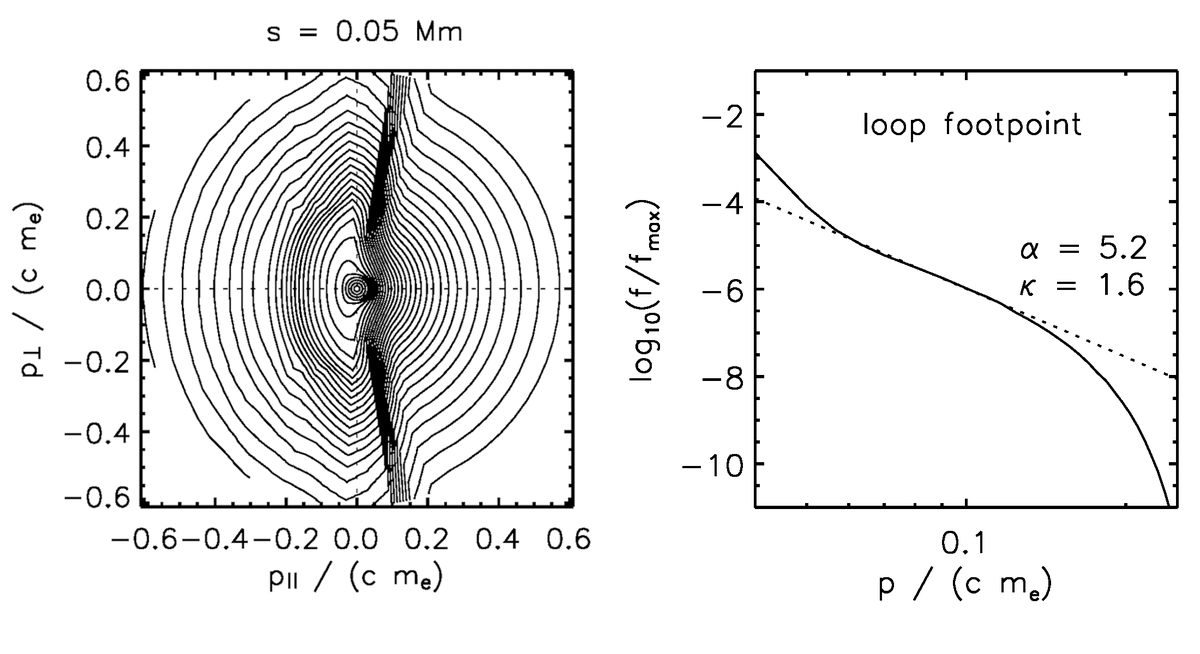Plasma kinetics
In the solar corona and wind, the collisional mean free paths of electrons and ions exceed characteristic length scales of the plasma, especially for suprathermal energies. Plasma models that are based on a fluid description, like MHD, are not applicable here. The velocity distribution functions (VDFs) of different particle species deviate from the Maxwellian distribution that is characteristic for states near thermodynamic equilibrium. Under such conditions, kinetic models are necessary. With kinetic models, it is possible to describe the interaction between particles and plasma waves on a microscopic scale, to study how waves shape electron or ion VDFs, and to calculate wave growth rates for plasma instabilities.
A Vlasov code that calculates particle VDFs as function of space, velocity, and time, has been developed at AIP. It includes the effects of Coulomb collisions among electrons and different ion species, as well as resonant wave-particle interaction. It can be applied to space plasmas in the solar corona, solar wind, and planetary magnetospheres. Its use is not limited to our solar system, it can easily be adapted to other stellar environments and exoplanets. The code is continuously developed further.

Isoline plot of electron VDFs at the footpoints of a coronal loop (left), and resulting power-law distribution (right).
Credit: AIPThe image shows an example of the application of the Vlasov code on electrons in a coronal loop with an influx of whistler / electron cyclotron waves. The VDF is shaped by the whistlers, and electrons are brought from low speeds parallel to high speeds perpendicular to the magnetic field, leading to the production of suprathermal electrons. Their VDF can be fitted by a power law or kappa distribution, as they are observed in the solar wind, e.g. by Solar Orbiter.
Such kinetic models can also be used to study the propagation of energetic electrons, that are accelerated in solar eruptive events, that cause radio emission observable by LOFAR, and that can be detected by space-bound instruments, e.g. EPD on Solar Orbiter.